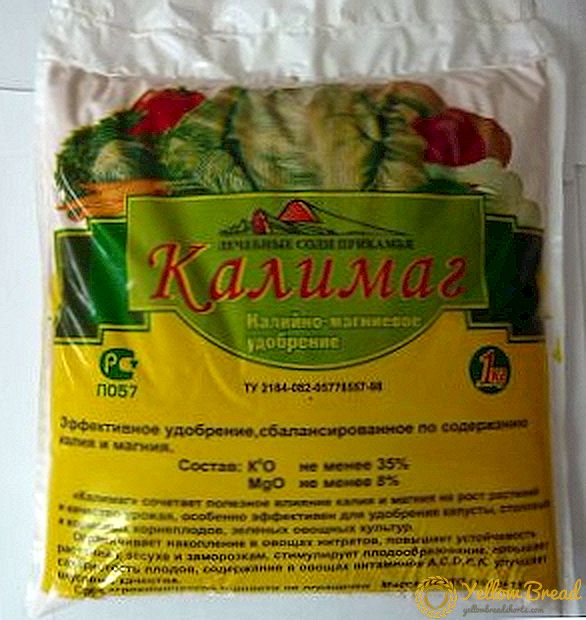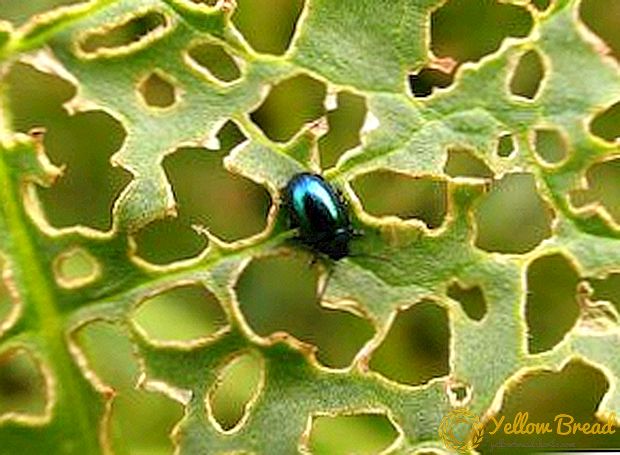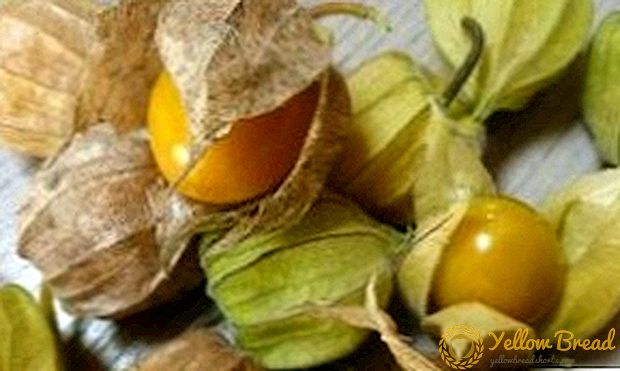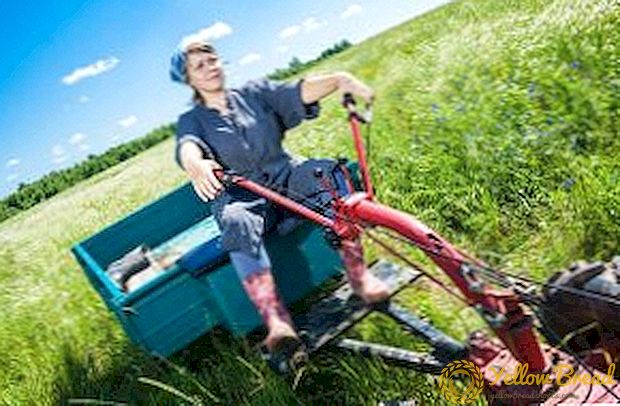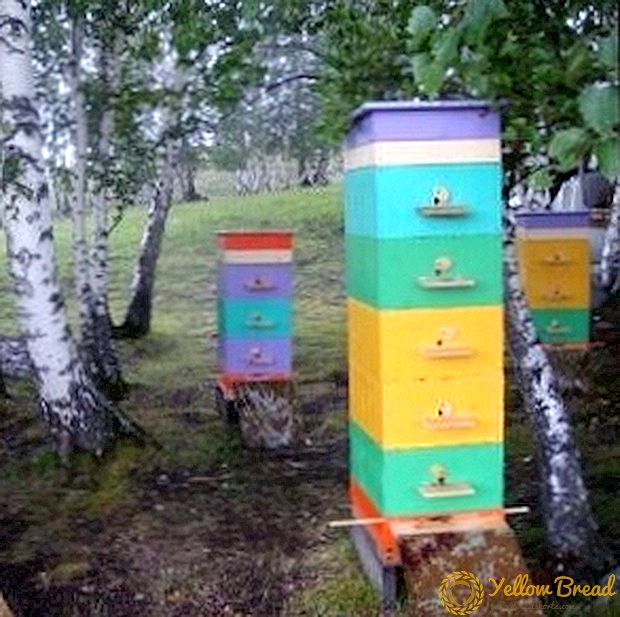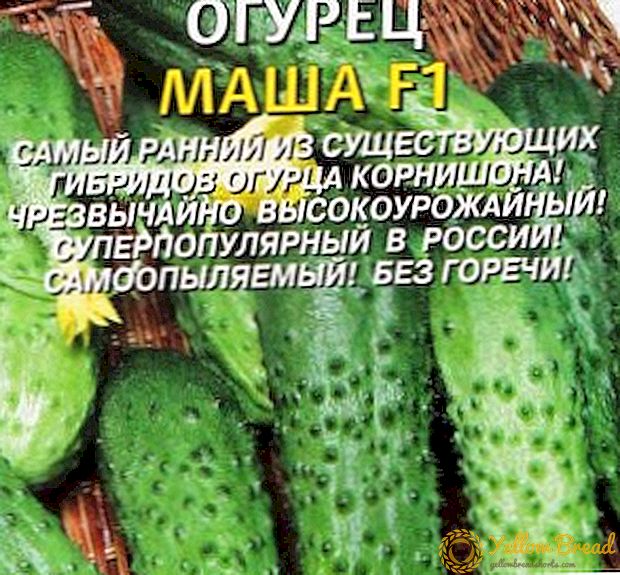 The early ripe grade of tomatoes "Sanka" is very popular among gardeners, it is often possible to hear about it and read good reviews. In this article we will look at tomatoes of the "Sanka" variety, its characteristics, methods of cultivation and how it is better than other varieties.
The early ripe grade of tomatoes "Sanka" is very popular among gardeners, it is often possible to hear about it and read good reviews. In this article we will look at tomatoes of the "Sanka" variety, its characteristics, methods of cultivation and how it is better than other varieties.
- History of tomato removal "Sanka"
- Tomato "Aelita Sanka": characteristic
- Description of the bush
- Description of the fetus
- Yield
- Disease and Pest Resistance
- Application
- How to choose quality seedlings when buying
- The optimal scheme for planting seedlings
- Features growing tomatoes "Sanka"
- Watering and weeding the soil
- Top dressing of tomatoes
- Garter and pasynkovanie
History of tomato removal "Sanka"
This variety of tomatoes was bred by Yu. A. Panchev at NIISSSA, and the variety appeared in the register of varieties that were zoned in 2003. The recommended region for cultivation is Central Black Earth.
Tomato "Aelita Sanka": characteristic
Tomato "Sanka" has a description as a determinant variety of tomatoes. The term determinant in this case means short. The growth of this plant stops after the formation of 5-6 brushes along with the fruits.
The ovary in this variety is formed and developed synchronously on all hands, which ensures almost simultaneous ripening of fruits. 
- The precocity of the fruit. 80 days pass from the first shoots to the ripening of the first fruit of this plant. But there are cases and ripening of tomatoes earlier - on the 72nd day. This factor depends on the growing conditions.
- Increased resistance to cold and poor light.
- This plant is not a hybrid. Therefore, you can use seeds collected from fruits for further cultivation.
- Can be grown both in open ground and in the greenhouse.
- Good resistance to pests and diseases.
Description of the bush
A bush of tomatoes up to 50 cm in size, but in some cases even all 60 cm. The stem bush has intermediate inflorescences and in most cases does not require additional support and garters.Often does not require removal of excess shoots. The formation of a bush occurs very quickly, and the bush spends all the remaining time and strength on the ovary of the fruit.
Description of the fetus
The fruits of Sanka are small, sometimes small, round and differ in the density of the skin. Tomatoes are bright red in color and are characterized by amazing one-dimensional, due to which this variety is popular for cultivation for industrial purposes. The weight of one tomato is from 80 to 150 grams.  Tomatoes are distinguished by good taste, juiciness and fleshyness, due to which they are used for different purposes. If grown in natural conditions, the tomatoes have a great aroma, in the greenhouse it is lost.
Tomatoes are distinguished by good taste, juiciness and fleshyness, due to which they are used for different purposes. If grown in natural conditions, the tomatoes have a great aroma, in the greenhouse it is lost.
Yield
Tomatoes "Sanka" with proper cultivation have an average yield. One square meter accounts for about 15 kg of fruits.
Disease and Pest Resistance
This plant variety is considered to be resistant to diseases, but if it is not properly cared for, then Sanka may be affected:
- Black leg. The seedling is mainly affected by this disease.The black leg is characterized by the fact that the basal part of the plant darkens and dries - this leads to the death of the seedlings. To protect the tomatoes from the disease, it is necessary to observe moderate watering and process with potassium permanganate: for 5 liters of water 0.5 g potassium permanganate.
- Alternaria - This disease is characterized by a dry spot of tomatoes. It affects the entire plant, which is above the ground. Alternaria can be recognized due to dark spots on the leaves, and tomatoes are covered with a bloom of dark color. For the prevention and treatment it is necessary to use fungicides such as "Bravo" and "Sectin".
- Black bacterial spotting - It is a fungus that infects tomatoes, which is characterized by the appearance of dark spots on the leaves, fruits and stems.
- Late blight - brown rot. The appearance of brown spots on the cuttings and leaves, as well as the formation of dark solid formations under the skin of the fruit is evidence of infection with this disease. In order for tomatoes not to be affected by brown rot, it is necessary not to overwet the soil. Bordeaux liquid and boric acid solution are well suited to combat this disease.
Application
Thanks to the sweet and sour taste, this variety of tomatoes is often eaten fresh and for preparing salads. The small size and one-dimensional make the Sanka popular for canning. Also a good option for use is the preparation of juice, ketchup, pasta or tomato. 
How to choose quality seedlings when buying
To select quality seedlings, you must consider the following criteria:
- When choosing, pay attention to the age of the seedlings, it should not exceed 2 months, it is better to buy seedlings, which 1.5 months is the best option.
- The plant must have at least 6 true leaves and be up to 30 cm tall.
- Pay attention to the roots of the plant, they must be undamaged and well developed. Also, the plant should have a thick base and bright green strong leaves.
- Examine the seedlings for fungal and pest damage.To do this, you need to inspect the leaves from the bottom for the presence of eggs of pests. The plant itself should not have stains, browning or other obvious signs of disease.
- Seedlings should be placed in containers with soil and not be lethargic.

The optimal scheme for planting seedlings
Consider the scheme for planting seedlings of tomato "Sanka" and when you need to plant. It is necessary to plant seedlings at a sufficient distance from each other in order to provide an adult plant with the necessary place to form a strong root system and good ventilation of air between the bushes. The optimal planting scheme is considered to be 40 by 40 cm square. It is recommended to plant seedlings in the middle of May.
Features growing tomatoes "Sanka"
In order to maintain tomato varieties "Sanka" in a healthy state and to obtain a large crop, it is necessary not only to make the right planting, but also to organize quality plant care.
Watering and weeding the soil
Watering plants is necessary when the soil dries well to avoid over-wetting. Watering is best done in the evening, without falling on the parts of the plant. Weeding the soil must be done after watering, for loosening, and also for eliminating weeds so that the tomatoes grow better. 
Top dressing of tomatoes
"Sanka" - tomatoes for open ground and do not require fertilizer nitrate or other chemical fertilizers, enough will be organic.
Garter and pasynkovanie
If you properly care for the plant, then the tomatoes will not need a garter, but if the abundance of fruit tilts the bush and deforms it, then you can tie up the plant. To do this, you need to choose a suitable support and drive it into the ground, next to the bush and carefully, without injuring the rather fragile shoots, to carry out the garter.  Many gardeners are interested in the question: Tomato "Sanka" stepson or not. On the Internet, almost all sources say that this variety does not require staking at all.Based not only on articles, but also on reviews of experienced gardeners, it can be noted that, indeed, "Sanka" does not need to remove extra shoots. Variety and so early and growing rapidly, so there is no need to stepchild it.
Many gardeners are interested in the question: Tomato "Sanka" stepson or not. On the Internet, almost all sources say that this variety does not require staking at all.Based not only on articles, but also on reviews of experienced gardeners, it can be noted that, indeed, "Sanka" does not need to remove extra shoots. Variety and so early and growing rapidly, so there is no need to stepchild it.
Summing up, it is important to note that the variety of tomatoes "Sanka" is easy to grow and get a good and high-quality crop. It is only necessary to follow the recommendations and rules of plant care in order to provide tomatoes with good conditions for growth and fruiting.

